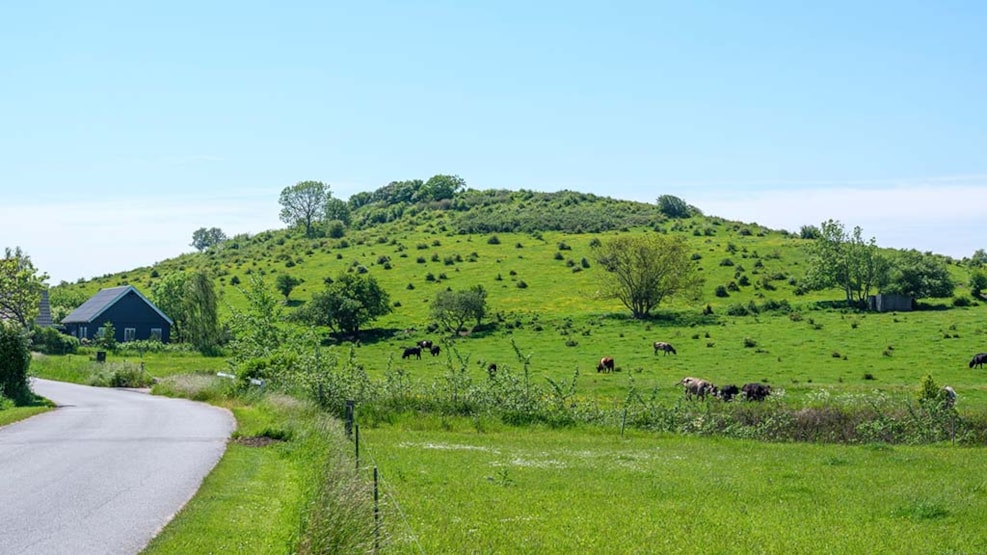
HATBAKKE-CHALLENGE: Climb Fakkebjerg
Put on your HATBAKKE climbing shoes and climb the 37 metre HATBAKKE hill Fakkebjerg
360-degree view of the South Funen Archipelago
Fakkebjerg, located two kilometres southeast of Bagenkop, is 37 metres tall.
From the top you can see the entire southernmost part of Langeland - and in clear weather also Lolland, Ærø, and the north German coast. Fakkebjerg has an oval shape measuring 370 x 200 metres and rises 30 metres above the surrounding terrain. From 1806 to 1905 there was a lighthouse on top and after The Second World War and until 1972 there were several different radar systems.
The landscape around Fakkebjerg
The flat, low-lying area to the west and north-west of Fakkebjerg was at the end of the last ice age a moraine plain, partially covered by small meltwater plains. As the sea level rose and the South Funen Archipelago was formed, the groundwater level also rose, and bogs and small lakes formed in the lowlands. Later, the area was flooded by the sea and transformed into a branched fjord system that included Lundenor, Magleby Nor, Klise Nor, and Søgård Sø. The fjord stretched all the way to the foot of Fakkebjerg which was then on the coast. In 1853 the area was dammed and the fjord drained.
Access to Fakkebjerg:
You can park in a car park at the foot of Fakkebjerg.
Points:
Climbing Fakkebjrg gives a total of 50 points in the Hatbakke Conquer challenge.
Note the date of your successful mountain ascent on your Hatbakke-Challenge sheet and embark on the next Hatbakke challenge.
Also discover:
500 metres southwest of Fakkebjerg - on the foothills of a smaller Hatbakke - you'll find the impressive Hulbjerg Jættestue from the Neolithic Age. Here you can crawl through a long corridor into a stone tomb where at least 53 people, including 17 children, have been laid to rest. The burial chamber contains a skull with the only known example of a dental drill from ancient Denmark - a root canal drilled with a flint drill to drain inflammation from an abscessed tooth. Tartar in the hole shows that the patient survived the treatment.